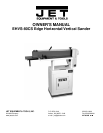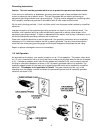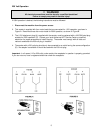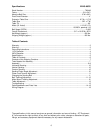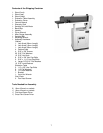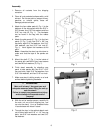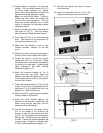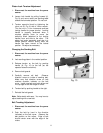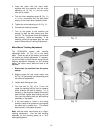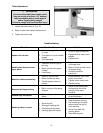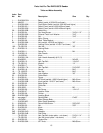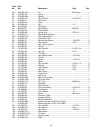
3
WARNING
1. Read and understand the entire
instruction manual before attempting
assembly or operation.
2. This sander is designed and intended for
use by properly trained and experienced
personnel only. If you are not familiar
with the proper and safe operation of a
sander, do not use until proper training
and knowledge have been obtained.
3. Always wear approved safety glasses/face
shields while using this machine.
4. Make certain the machine is properly
grounded.
5. Before operating the machine, remove tie,
rings, watches, other jewelry, and roll up
sleeves above the elbows. Remove all
loose clothing and confine long hair. Do not
wear gloves.
6. Keep the floor around the machine clean
and free of scrap material, oil and grease.
7. Keep machine guards in place at all times
when the machine is in use. If removed for
maintenance purposes, use extreme caution
and replace the guards immediately.
8. Do not over reach. Maintain a balanced
stance at all times so that you do not fall or
lean against blades or other moving parts.
9. Make all machine adjustments or
maintenance with the machine unplugged
from the power source.
10. Use the right tool. Don't force a tool or
attachment to do a job that it was not
designed for.
11. Replace warning labels if they become
obscured or removed.
12. Make certain the switch is in the OFF
position before connecting the machine to
the power supply.
13. Give your work undivided attention.
Looking around, carrying on a conversation,
and "horse-play" are careless acts that can
result in serious injury.
14. Keep visitors a safe distance from the work
area.
15. Use recommended accessories; improper
accessories may be hazardous.
16. Read and understand warnings posted on
the machine.
17. Failure to comply with all of these warnings
may cause serious injury.
18. Some dust created by power sanding,
sawing, grinding, drilling and other
construction activities contains chemicals
known to cause cancer, birth defects or
other reproductive harm. Some examples
of these chemicals are:
• Lead from lead based paint
• crystalline silica from bricks and cement
and other masonry products, and
• arsenic and chromium from chemically-
treated lumber.
19. Your risk from those exposures varies,
depending on how often you do this type of
work. To reduce your exposure to these
chemicals: work in a well ventilated area,
and work with approved safety equipment,
such as those dust masks that are
specifically designed to filter out
microscopic particles
20. Do not operate tool while under the
influence of drugs, alcohol or any
medication.



